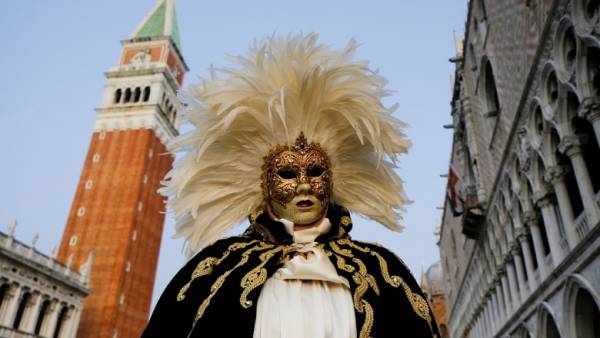Bloody hell
How to celebrate carnival in different countries of the world.

February is the month of carnivals. Celebrate it all around the world: in Goa and in Macau, in Rio de Janeiro, Barranquilla, New Orleans and Quebec and, of course, in Europe, where this tradition went. The most popular carnivals of the Old world held in nice, France and Dunkirk, German Mainz, Cologne and Dusseldorf, Spanish Tenerife and, of course, in Italy — in Venice, in Sicily and Sardinia. But this is only if we talk about the most famous. But in fact in February walk everywhere — in Austria, Belgium and Switzerland, Poland and the Czech Republic, Scandinavia and the Balkans. The portal iz.ru could not get past the General fun.
“Fifth time of the year»
Carnival traditions go way back. But in how it far, historians have to a common denominator did not come. Actually, there are two points of view — ancient and medieval. Some experts (especially the antiquarians) see the roots of mass folk festivals with abundant libations, a ritual of gluttony and other indecencies in ancient Dionisian and the Orgy. Others (mainly Medievalists) believe that these traditions died in the era of the dark ages and the medieval carnivals have nothing to do with them. Apparently, both are right, as usually happens in discussions about the historical roots of complex social and cultural phenomena.
Just to say that the carnival action is absolutely a pagan, even in the Middle ages, it is conventionally “built” into the system of Christian holidays.
At the time, all the feasts had a religious background, but the carnival is the least of all degrees.
If the ancient Dionysia and Bacchanalia were held in March, the carnival is always held in February, the last week before lent. Went from this tradition, now it is impossible to say, but apparently, from traditional folk festivals, marking the end of winter. And later, the Church has linked these events with the beginning of lent.
Interestingly, official Church pretty consistently been an opponent of unbridled festivities, but was forced to put up with the will of the people.
Excessive dogmatism and rigidity in trifles could cause a backlash among ordinary people whose faith is built more on traditions and everyday practices, rather than on a deep awareness of Christian doctrine. Great post here and the majority was perceived as rather heavy duty than a time of spiritual purification and enlightenment. But before this test, people just needed a vent, an emotional outburst, the rush of power put to death the flesh.
All wanted to be Gentiles, and the Church was forced to accept it or at least turn a blind eye. Just a few days. By the way, the word “carnival” is associated with the eve of lent, it comes from the Latin words sipe (meat) and vale (“farewell”).
The Western and southern Slavs this holiday corresponds to the “Shrove Tuesday” in Russia — Mardi Gras, the Scandinavians — the Shrovetide, Slovenians — kurentovanje, the French have Mardi Gras.
In the days of the carnival everyone was up on its head. Was abolished all class distinctions were allowed practically any jokes against the clergy and the aristocracy, it was merriment and buffoonery. This temporary abolition of hierarchical relations between people were created in the carnival square a special type of communication impossible in everyday life. Elaborated special forms of marketplace speech and obscene gesture, Frank and free, does not recognize any distance between communicating and free from the usual norms of etiquette and decency. People wore funny costumes and the masks to be free and relaxed. It was a fun folk festival carnal joy — simple rude humor, gluttony, drunkenness and outright debauchery. He was excluded from normal rules and regulations, it is no coincidence that it was called “the fifth season”.
In the usual forms today, it was a city holiday, although in the villages where lived the majority of the population of medieval Europe, it also noted.
Probably a bit different. Organization of the city “activities” gradually took over the professional community — guilds and Guild, and then joined the city magistrates. Began to emerge in specific local rituals, and there is every city found some of their features. But in General, the ideology and structure of the holiday was General. And everywhere the heathen it was much more than Christian.
Over time, the Europeans brought carnival tradition in the colony, where it was enriched with local color and Shine with new colors. And in most of Europe, the carnivals changed, losing connection with folk customs and acquiring more and more commercial lines. Let’s talk about the three most famous carnivals in the world — a fairly traditional kölsch, courtly-Venetian aesthetic and unrestrained Brazilian.